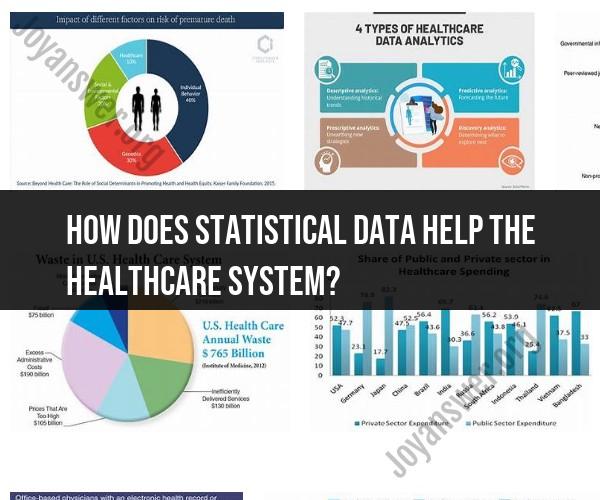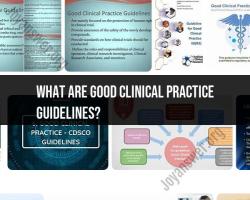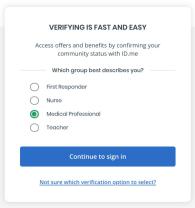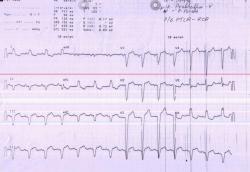How does statistical data help the healthcare system?
Statistical data plays a crucial role in the healthcare system by providing valuable insights, supporting evidence-based decision-making, and driving improvements in patient care and public health. Here are some of the key benefits and applications of statistical data in healthcare:
1. Disease Surveillance and Early Detection:
- Statistical data helps healthcare authorities monitor and track the prevalence and incidence of diseases. By analyzing data on reported cases, trends, and geographic patterns, public health officials can identify outbreaks and take timely preventive measures.
2. Epidemiological Studies:
- Statistical analysis is fundamental in epidemiological research, which investigates the causes, patterns, and risk factors of diseases. Researchers use statistical methods to establish links between exposures (e.g., environmental factors) and health outcomes, which can inform public health interventions.
3. Healthcare Resource Allocation:
- Hospitals and healthcare organizations use statistical data to optimize resource allocation, including staff scheduling, bed capacity management, and inventory control. This ensures efficient and cost-effective healthcare delivery.
4. Patient Outcomes Analysis:
- Healthcare providers use statistical analysis to evaluate patient outcomes and assess the effectiveness of different treatments and interventions. This information helps improve the quality of care and patient safety.
5. Predictive Analytics:
- Predictive modeling and machine learning techniques are applied to healthcare data to forecast disease trends, patient readmissions, and resource needs. This enables proactive healthcare management and resource planning.
6. Patient Risk Assessment:
- Healthcare professionals use statistical models to assess patients' risk factors for various health conditions, such as heart disease or diabetes. This helps in early intervention and personalized care planning.
7. Clinical Trials and Drug Development:
- Statistical methods are integral in designing and analyzing clinical trials, which are essential for testing the safety and efficacy of new drugs and medical treatments.
8. Health Policy Development:
- Policymakers use statistical data to inform decisions about healthcare policy, insurance coverage, and public health initiatives. This data helps shape legislation and regulations that impact healthcare delivery and access.
9. Resource Optimization in Public Health Emergencies:
- During public health emergencies like pandemics, statistical data is used to allocate medical supplies, coordinate response efforts, and assess the impact of containment measures.
10. Patient Population Health Management:- Healthcare organizations use statistical analysis to segment patient populations based on health needs and risk factors. This allows for targeted interventions and care coordination, especially in the context of population health management.
11. Fraud Detection:- Statistical techniques are employed to detect healthcare fraud and abuse in billing and claims data, helping to reduce healthcare costs and ensure that resources are used appropriately.
12. Quality Improvement:- Hospitals and healthcare facilities use statistical data to identify areas for improvement in patient care, reduce errors, and enhance overall quality of care.
In summary, statistical data is a powerful tool in healthcare that aids in understanding health trends, optimizing resource allocation, improving patient outcomes, and guiding policy decisions. Its applications are vast and diverse, contributing to more effective and efficient healthcare delivery and public health management.
Data-Driven Healthcare: The Role of Statistical Data in Improving the System
Data-driven healthcare is a new approach to healthcare that uses data and statistics to improve the quality and efficiency of healthcare delivery. Statistical data can be used to identify trends, patterns, and correlations in healthcare data. This information can then be used to develop new treatments and interventions, improve clinical decision-making, and allocate resources more effectively.
Statistical data can be used in a variety of ways to improve the healthcare system. For example:
- Statistical data can be used to identify populations at high risk for certain diseases. This information can then be used to target preventive care and outreach programs.
- Statistical data can be used to evaluate the effectiveness of new treatments and interventions. This information can then be used to inform clinical guidelines and treatment decisions.
- Statistical data can be used to compare the performance of different hospitals and healthcare providers. This information can then be used to identify areas for improvement and to hold healthcare providers accountable for the quality of care they provide.
Harnessing Data for Health: How Statistics Benefit Healthcare
Statistics can be used to benefit healthcare in a number of ways, including:
- Improving clinical decision-making: Statistical data can be used to develop clinical guidelines and decision support tools that can help doctors and nurses make better decisions about patient care.
- Identifying and managing risks: Statistical data can be used to identify patients at high risk for certain diseases or complications. This information can then be used to develop and implement risk management strategies.
- Evaluating the effectiveness of treatments and interventions: Statistical data can be used to evaluate the effectiveness of new treatments and interventions. This information can then be used to inform clinical guidelines and treatment decisions.
- Improving the allocation of resources: Statistical data can be used to identify areas where healthcare resources are most needed. This information can then be used to allocate resources more effectively.
Statistical Insights: Enhancing the Functionality of Healthcare Systems
Statistical insights can be used to enhance the functionality of healthcare systems in a number of ways, including:
- Improving the quality of care: Statistical data can be used to identify areas where the quality of care is suboptimal. This information can then be used to develop and implement quality improvement initiatives.
- Reducing costs: Statistical data can be used to identify areas where healthcare costs are high. This information can then be used to develop and implement cost-saving measures.
- Expanding access to care: Statistical data can be used to identify populations that have limited access to healthcare. This information can then be used to develop and implement programs to expand access to care.
Overall, statistical data plays an important role in improving the quality, efficiency, and accessibility of healthcare. By using statistical data to identify trends, patterns, and correlations in healthcare data, healthcare professionals and policymakers can make better decisions about patient care, resource allocation, and program development.











